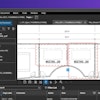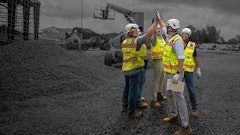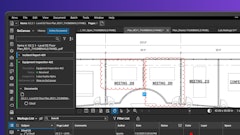
As your construction firm navigates today’s economic landscape, the $1.2 trillion public infrastructure bill, passed a few years ago, continues to carry both promise and uncertainty. Nevertheless, the domestic procurement preferences and materials sourcing requirements tied to this legislation still hold the potential to create meaningful growth opportunities. That said, it’s crucial to be prepared for various outcomes – rapid scaling can threaten profitability if not managed carefully. The key to thriving in this environment is building a robust financial roadmap that anticipates changing market conditions, supports strategic expansion and safeguards healthy cash flow and profits.
2025 Financial Forecast
Moving through 2025, challenges and opportunities will be mixed. Though the cost of materials may eventually stabilize, inflationary pressures will likely persist, compelling firms to reevaluate their pricing strategies. Additionally, workforce shortages and higher wage demands will drive businesses to scrutinize project staffing more closely.
Cash forecasting and contract flexibility remain crucial as we navigate ongoing economic uncertainty. Even if the scope of government-funded infrastructure projects fluctuates, competition for available work could still intensify – making strategic financial planning even more vital. Meanwhile, regular reviews of tax strategies are essential, as shifts in tax laws could significantly impact profitability.
Roadmaps: Elements of Robust Financial Planning
Finances are usually the top concern for most businesses but keeping them in order can be a formidable task when combined with all the considerations revolving around cash flow. That’s why developing a clear financial roadmap can help mitigate risks and keep the firm on smooth financial sailing. But where to start?
A financial roadmap is like a game plan – it helps businesses stay ahead of rising costs, shifting project demands and an unpredictable market. Without a clear plan, it’s easy to make decisions on the fly, but that often leads to financial headaches down the road. A well-thought-out strategy keeps things running smoothly and ensures that resources are allocated wisely and businesses are financially prepared for whatever comes next. It’s all about staying in control, making informed choices and setting up the company for long-term success.
Keeping an eye on cash flow is a game-changer because it helps spot potential financial issues before they become an issue. Regular cash flow forecasting is also essential for predicting shortages before they happen, which enables businesses to find funding gaps and obtain funding ahead of time. One great way to keep track of cash flow is to use milestone-based billing instead of percent-completion billing. This approach keeps cash flow steady by ensuring payments arrive at set points rather than waiting until significant costs have already piled up.
Beyond that, strategic financial planning will help with known and unforeseen big-ticket items such as equipment purchases and workforce expansion. Along with risk mitigation strategies like supply chain disruption contingency planning, strategic financial planning also includes planning for significant investments like labor expansion and equipment purchases. Finally, it’s a good idea to routinely evaluate clients' economic standing to prevent taking on high-risk projects that could be a money pit.
Construction Cash Flow & Profits: The Metrics That Matter
Every business needs a set of metrics that serves as its financial heartbeat. Think of metrics like an ongoing performance review. Successful construction firms don’t just rely on gut instinct – they use data-driven decision-making to stay ahead. These key numbers help businesses understand where they stand financially and catch potential risks before becoming costly problems.
Rather than waiting until a project is complete to assess financial performance, monitor the numbers throughout the process. This way, they can adjust as needed instead of dealing with surprises later.
Tracking labor, equipment, and material usage helps maximize efficiency, while accurate cash flow projections allow firms to anticipate financial risks before they become serious issues. And let’s not forget record-keeping – keeping financial records up to date reduces the chance of errors and unexpected losses. These metrics aren’t just numbers on a spreadsheet – they’re the key to making informed decisions and ensuring long-term success.
Cash Flow Survival: Thriving Despite Rising Costs
Revenue is one thing – profit is another. The construction industry is still dealing with a challenging mix – worker shortages and unpredictable material costs that can swing wildly from one project to the next. Projects that look profitable on paper can quickly become financial headaches without careful planning. That’s why innovative cash flow management isn’t just helpful – it’s essential for financially stable your business.
Updating pricing models regularly is a crucial step in maximizing cash flow. Even similar projects can involve costs that vary greatly. Make sure the costs of projects are projected on an individual basis, including inflation. It’s also wise to take advantage of technology by using a software system that offers real-time financial monitoring to manage costs and avoid overruns. Lastly, clear payment terms must be established, and outstanding invoices must be followed up promptly to prevent funding gaps.
Keep More, Grow More: Tax Planning for Bigger Profits
For construction companies – especially LLCs and S-Corps – thoughtful tax planning isn’t just about following the rules but protecting profits and keeping more of what you earn. The correct tax strategies can mean the difference between a strong bottom line and financial strain, so staying proactive is key.
Tax laws are complex, and if the company isn't actively managing liabilities and taking advantage of available benefits, it could be leaving money on the table. One big opportunity? Equipment depreciation. When handled strategically, it can significantly lower tax burdens. Another smart move is using the revenue recognition model. This method helps minimize tax liability and offers a smoother ride regarding income fluctuations. Choosing the right approach ensures your financial reporting aligns with your business goals. With a solid tax plan, construction firms can avoid being caught off-guard, reduce unnecessary costs and set themselves up for long-term financial success.
Of course, when it comes to taxes, a tax expert should always be within reach. The tax code changes, so if there’s no dedicated tax accountant on staff, it’s wise to proactively consult with a tax professional throughout the year to ensure the company gets all the credits and deductions due. Plus, an ongoing relationship with a tax expert may help avoid surprises at tax time and support safeguarding earnings.
Stay on Budget, Stay on Track: Project-Based Accounting
Construction accounting isn’t like most other industries because it’s based on projects, and each project is unique. Finding the sweet spot between charging a competitive price and turning a profit can be hard when materials, labor and even local taxes are different across projects. Companies that use contractors may also notice varying budgets. It can be a lot to juggle. That’s why project-based accounting can be helpful.
Project-based accounting helps keep budgets up to date, which can help spot overruns before they get out of control. The important part is proper implementation. Key financial factors to consider are billing, utilization, cash flow and profit. Monitoring these indicators can give the firm a clearer picture of where it stands. For example, under a project-based accounting model, utilization is controlled because labor and materials are tracked per project for efficiency. Profit margins can be monitored on a job-by-job basis so that the firm doesn’t have to wait until a project is completed to figure out if the project is financially profitable. Firms can also see where their profit margin is starting to shrink and course-correct earlier. Project-based accounting can also help sync billing with expenses so that firms don’t have to wait in cycles before getting paid and covering ongoing costs. This can be of great benefit for large-scale construction projects.
Add to that accounting software that considers the uniqueness of construction and can automate indicators such as job costing in a real-time context to catch mistakes or other problems before they can negatively impact the project.
Navigating Growth with Financial Discipline
As construction firms scale to meet increased demand, financial discipline is paramount. Leaders must know their numbers and understand the economic viability of both individual projects and the business. Right-sizing operations, from labor to overhead, is essential to maintaining profitability. Furthermore, fostering collaboration between finance and operations ensures projects are well-executed and financially sustainable.
By implementing a strong financial roadmap, construction firms can take full advantage of industry growth while maintaining financial stability, efficiency and profitability.

















